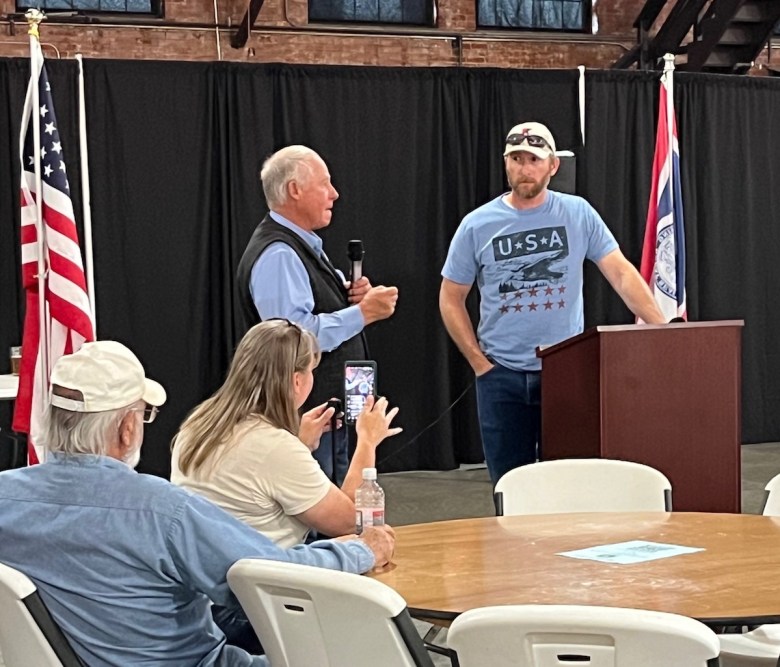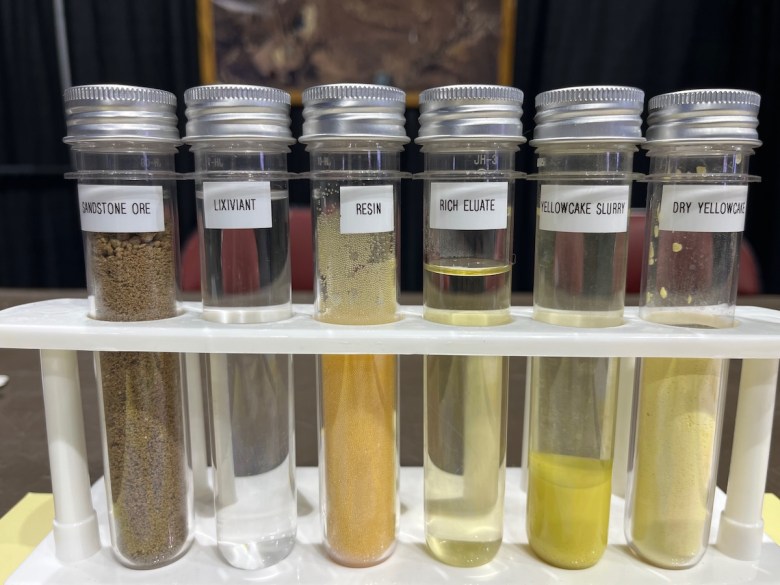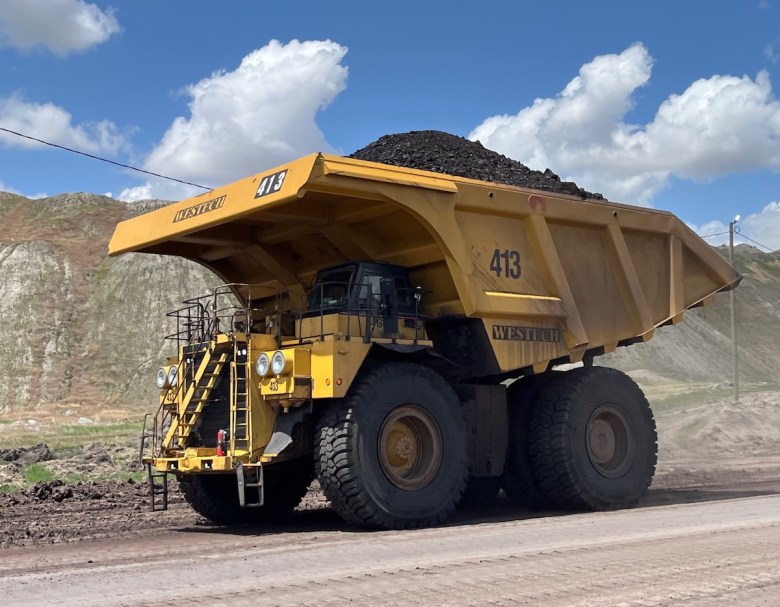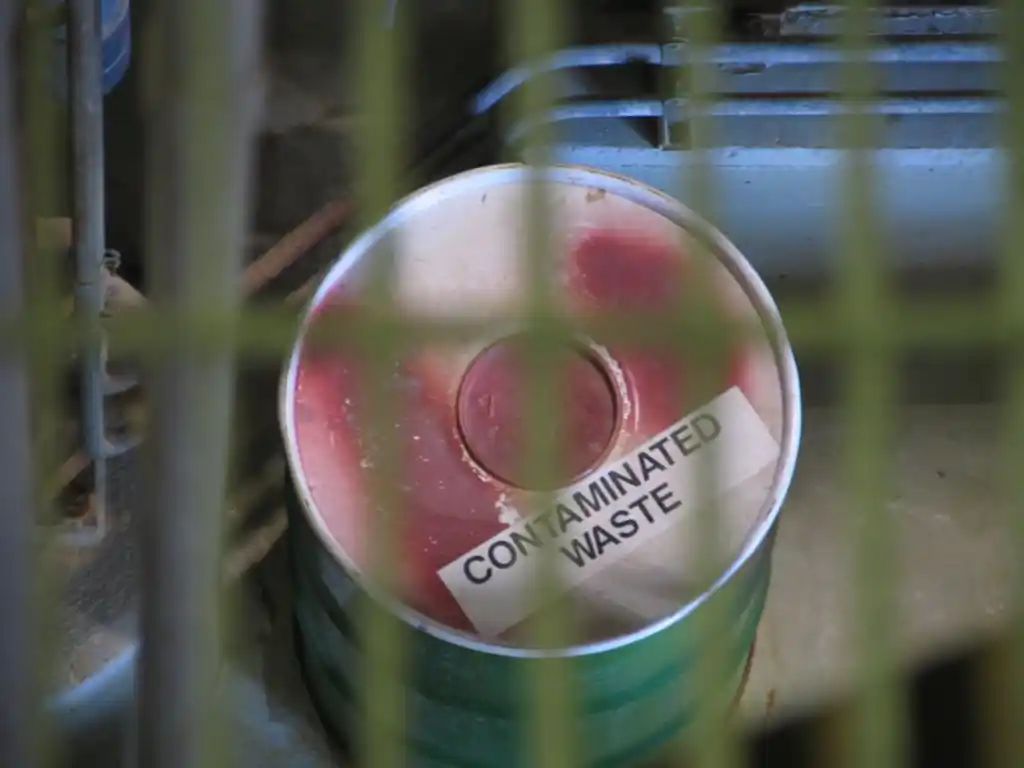Top officials in one of the nation’s most energy-prolific counties — home to uranium mining, oil, natural gas and the most productive coal-mining district in North America — are cautiously supportive of the nuclear energy industry’s burgeoning interest in northeast Wyoming.
But they don’t want its radioactive waste.
The Campbell County Board of Commissioners passed a resolution Tuesday stating the body will not support storing nuclear waste locally. That’s in line with state law, which currently prohibits nuclear waste storage. In anticipation that could change, the Campbell County resolution urges state lawmakers to allow “citizens to vote on the matter of high-level nuclear waste storage.”
The five-member commission voted 4-1 in favor of the position, with Commissioner Jim Ford casting the single “no” vote. The county solicited public input on the matter for several weeks and redrafted the resolution multiple times, most recently during a Nov. 13 workshop. Commissioner Jerry Means said he proposed the resolution amid growing interest in Wyoming from nuclear energy companies, as well as often intense public debate about nuclear energy’s risks and benefits.
 Midwest Republican Rep. Bill Allemand, left, introduces Bar Nunn Mayor Peter Boyer at a July 2025 town hall meeting regarding Radiant Industries’ plans — since scrapped — to manufacture nuclear microreactors. (Dustin Bleizeffer/WyoFile)
Midwest Republican Rep. Bill Allemand, left, introduces Bar Nunn Mayor Peter Boyer at a July 2025 town hall meeting regarding Radiant Industries’ plans — since scrapped — to manufacture nuclear microreactors. (Dustin Bleizeffer/WyoFile)
Opponents of the resolution, before and after Tuesday’s vote, warned it may send a signal to the industry, and to BWXT in particular, that it is not welcome in the community. While the company’s proposal to build a nuclear fuel manufacturing plant in Campbell County does not involve radioactive waste or storing such materials, nuclear energy companies are sensitive to local opposition, according to Gillette-based L&H Industrial President Mike Wandler. He’s frequently credited for the industry’s recent interest in setting up manufacturing shops in Wyoming.
“So any resolutions against nuclear, they’re going to take very seriously,” Wandler recently told WyoFile. “They’re just going to go away and find someplace else to bring those jobs and to bring that revenue.”
Wandler and other nuclear energy industry supporters note that people sometimes conflate BWXT’s plans in Campbell County with a different proposal in Natrona County. Radiant Industries, unlike BWXT, did include storing spent nuclear fuel, but the California-based company scrapped its plans to build a nuclear microreactor manufacturing facility in October. The company cited a lack of “regulatory certainty” about whether the state would further loosen its ban on nuclear fuel waste storage — a key change in law needed to accommodate Radiant’s plan to store spent fuel from its microreactors at a campus outside the town of Bar Nunn.
Reached for comment after the resolution was passed, BWXT said it isn’t shying away from Campbell County.
“The resolution does not impact our proposed plans for a TRISO fuel fabrication facility in Gillette as our facility will neither create nor store high-level nuclear waste or spent nuclear fuel,” BWXT Advanced Nuclear Fuels Senior Director Josh Parker told WyoFile via email.
Meantime, some in favor of the resolution noted previous legislative attempts to allow spent nuclear fuel waste in Wyoming. Industry skeptics have also expressed fears that the federal government might force either an interim or permanent storage facility in a community that doesn’t want it.
“We all know laws can be changed every year,” Means said. “So this is basically getting out ahead of what I see for the future for Campbell County, because I do see people in our county, right here, [who] think that maybe we need to accept nuclear waste.”
The resolution
The commission’s 2-page resolution declared adherence to “the following guidelines regarding nuclear waste storage in Campbell County.”
No interim nuclear storage — domestically produced or relocated;
No consolidated interim storage — domestically produced or relocated;
No deep geological repository (caverns);
No deep geological repository (bore hole);
No exemptions granted for interim or consolidated storage, or geological repositories.
But what authorities or policy tools the county might use to enforce the guidelines are unclear.
 Uranium and ore samples. (Dustin Bleizeffer/WyoFile)
Uranium and ore samples. (Dustin Bleizeffer/WyoFile)
According to the resolution, the commission “supports the development and siting of the nuclear industry in Campbell County, if such facilities do not produce, receive, or store nuclear waste, except what is currently permitted by Wyoming law as of the date of this resolution.”
“We can’t override the state or the federal government,” Means told WyoFile. “It basically lets the community know that, as commissioners, we choose not to accept nuclear waste and spent fuel from [the nation’s] legacy waste. It really has no [legal] backbone.”
It also notes that “current Wyoming law does not allow for the people to vote on the specific issue of nuclear waste storage,” and resolves that “the Campbell County Board of Commissioners supports any change in state law that would allow citizens to vote on the matter of high-level nuclear waste storage.”
Though several Wyoming lawmakers suspect there will be another attempt in the upcoming budget session to crack the door open wider for nuclear waste storage, it’s unclear whether there might be forthcoming legislation to allow for some kind of public referendum on the issue.
 A truck hauls coal at the Belle Ayr mine in Campbell County in June 2025. (Dustin Bleizeffer/WyoFile)
A truck hauls coal at the Belle Ayr mine in Campbell County in June 2025. (Dustin Bleizeffer/WyoFile)
“Our resolution essentially says that, ‘Yeah, the Legislature should change the law to allow the citizens to vote on the issue,’” Commissioner Scott Clem, a former Wyoming representative, told WyoFile.
Radiant fallout
While opponents cheered Radiant’s pullout from Natrona County, the move shook many in the business community, particularly at the state level.
Gov. Mark Gordon pinned the blame on the far right of the Wyoming GOP.
“Members of the Freedom Caucus inspired ‘Club No’ convinced Radiant that Wyoming isn’t about leadership and problem solving,” Gordon said in a prepared statement in October. “‘Club No,’” he continued, “has ushered in a new culture of no matter who began or who commenced it, we’re against it. That is not the way Wyoming became the great state it is.”
Though it was not directly part of the Governor’s Business Forum agenda last week in Laramie, Radiant’s exit was a topic of discussion in the hallways and sometimes on the stage.
Many attendees “[are] mad about a certain project in the Natrona County area,” Wyoming Business Council Chief Executive Officer Josh Dorrell told the audience of about 500. “Why did we lose that? Because the vocal minority.”
For its part, the business council is ramping up efforts to garner support for nuclear energy development in Wyoming, according to Dorrell, both in general and for BWXT’s project in Campbell County, in particular.
The state is putting its financial might behind the project as well.
The Wyoming Energy Authority has recommended a $100 million state grant to support BWXT’s TRISO fuel manufacturing project. The grant, if approved by Gordon, would be the first and sole recipient of Wyoming’s Large Project Energy Matching Fund, created in 2024.
The agency is accepting public comment on the grant recommendation through Nov. 25. Public comments can be sent to wea@wyo.gov.
This article was originally published by WyoFile and is republished here with permission. WyoFile is an independent nonprofit news organization focused on Wyoming people, places and policy.
Related
